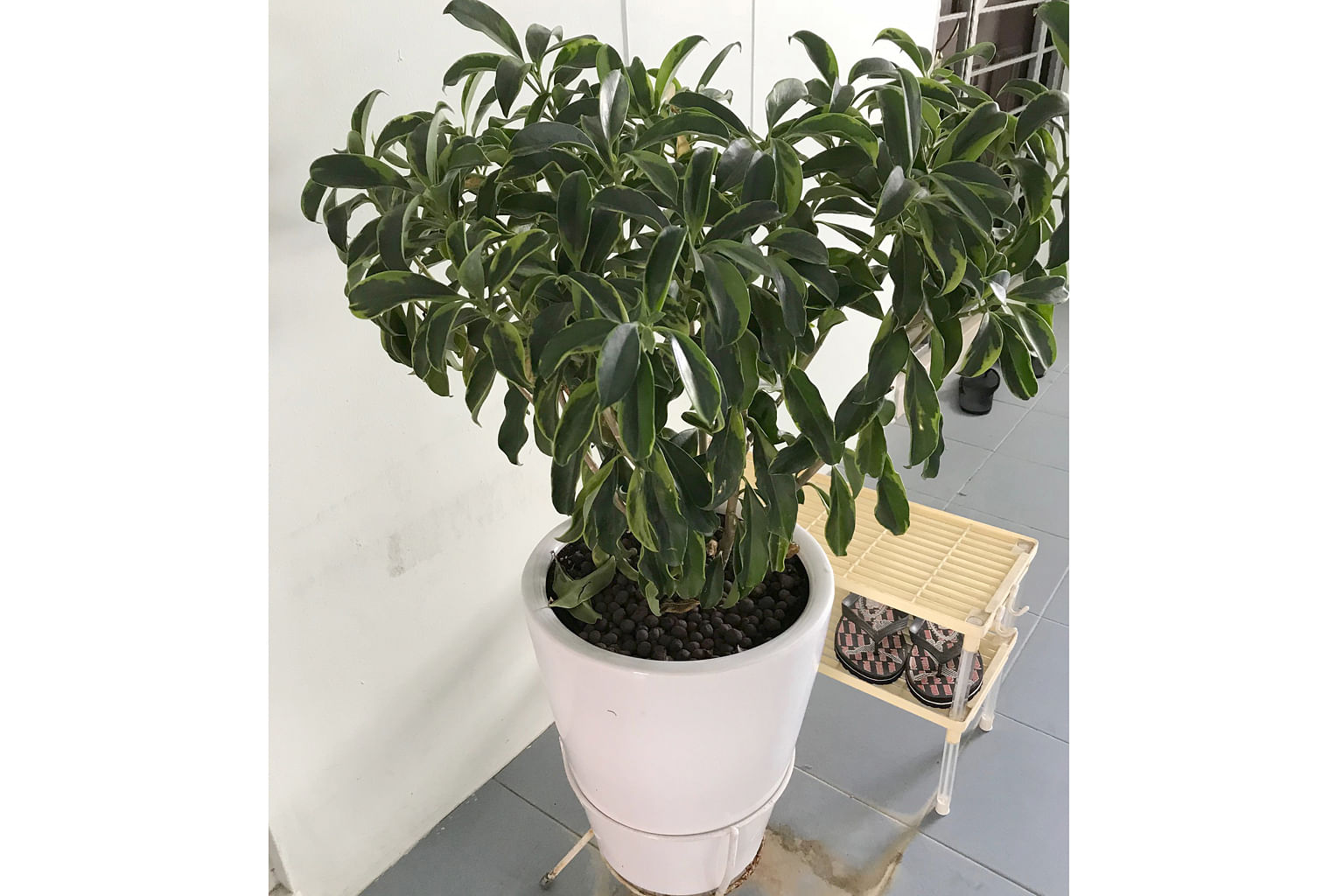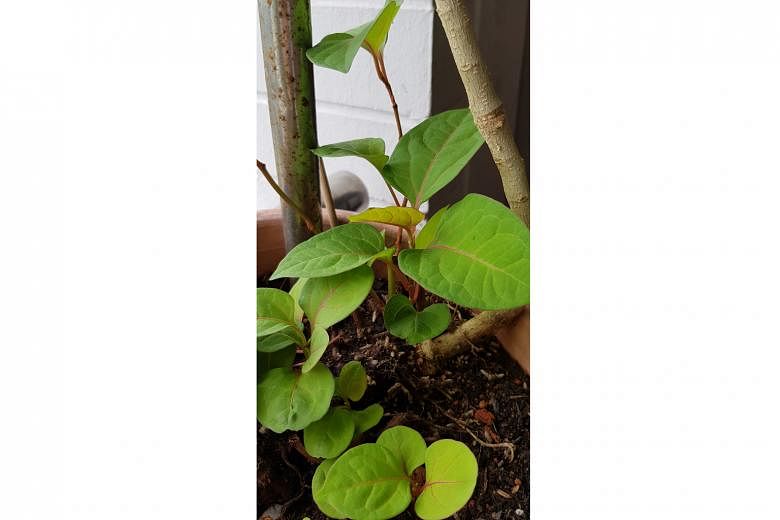Japanese Knotweed used in traditional Chinese medicine
A traditional Chinese medicine practitioner told me this plant (above) has medical properties. What is its name?
Aileen Kwok
The plant is botanically known as Polygonum cuspidatum. Its common name is Japanese Knotweed. The plant is easily propagated via division and stem-cuttings. It grows best under filtered sunlight and in moisture-retentive soil.
It is a herb that is used in traditional Chinese medicine - its rhizomes are documented to be used to treat issues such as inflammation, jaundice and cough.
Japanese bamboo has fungal infection

The leaves of my Japanese bamboo have yellow spots (above). There are also red rings with necrotic tissues in the centre. What is causing these?
Ong Xien Fong
Your Japanese bamboo (Dracaena surculosa) may be infected by fungus, leading to the leaf spots shown in the picture.
The causes include insufficient sunlight and air circulation in the area where the plant is growing.
First, remove the affected leaves to limit the spread of the disease. Then, ensure the plant receives sufficient sunlight - at least four hours of filtered sunlight daily - and rotate it regularly so that all its parts get some exposure to the light.
You may want to prune excessive foliage to enhance circulation among the leaves.
Lastly, you can spray a contact fungicide such as Captan as a preventive measure.
Also, ensure your plant is grown in well-drained soil so that it does not experience perpetual "wet feet".
Guiana Chestnut and Perfume Flower Tree need more light and water

I bought these plants (above and below) nearly half a year ago. Recently, the leaves started turning yellow and soft and dropping off. I live on the 16th floor and my apartment is windy. There is no direct sunlight on the plants, which are watered daily. What are the names of the plants and what is wrong with them?
Joshua Soh
The plant below is the Guiana Chestnut (Pachira aquatica) and the plant above is a Perfume Flower Tree (Fagraea ceilanica).

These plants will do better if they can be exposed to direct sunlight for at least six hours daily. The lack of light will lead to gradual decline of the plants. This is particularly evident in the Guiana Chestnut.
It can be seen that the Perfume Flower Tree is wilting from the lack of water. The loss of leaves from the Guiana Chestnut may also be caused by the same reason. Both plants need to be watered thoroughly every day, especially if they are grown in a windy location.
It appears that your corridor is quite a challenging area for plants to thrive. Without a light source, plants do not survive for long.
You may want to consider growing plants under artificial light indoors where they are protected from drying winds and have a light source to perform photosynthesis that is necessary for plant growth. Small potted houseplants as well as terrariums are ways to bring greenery indoors.
Happiness Tree may be experiencing transplant shock

I bought this plant (above) less than two months ago from a nursery whose staff repotted it for me. It looked healthy when I bought it, but now the leaves have white patches and are dropping off. The plant is grown in a spot that has full afternoon sun. What should I do to save it?
Rose Tang
Your Happiness Tree - its botanical name is Garcinia subelliptica - may have suffered from transplant shock and that caused its leaves to drop.
Did you witness the repotting process? This tree usually comes with a rather large root ball and the deliberate attempt to remove soil to make the root ball smaller to fit into a pot can damage the roots. This tree is known to be rather sensitive to root disturbance and can take quite long to recover.
For now, you may want to move it to a location that is cooler and where it is able to get filtered sunlight. Water the tree to ensure that it does not dry out. Such an environment will allow it to recuperate.
It is not apparent from the picture what the white patches on the leaves may be. Did you apply any chemical on the leaves? This could be a residue from the application. You should be able to clean it off with a wet cloth.
Another reason for the white patches could be a fungus or lichen. You can remove affected leaves to prevent its spread to other leaves.
Silver Buttonwood needs exposed spot to thrive

I saw this beautiful tree with silver leaves (above). What is its name and can I get it at a local nursery?
Swee Khuen Lee
The tree is commonly known as the Silver Buttonwood and its botanical name is Conocarpus erectus var. sericeus. It originally grows in the coastal swamps of south Florida. It is now a common landscape candidate and can be found in large plant nurseries locally.
Do note that this tree must be grown in an exposed environment where it can get full sunlight and has good air circulation. Shady and moist locations tend to promote weak growth where trees will be infested with pests.
It is not uncommon to see plants grown under such conditions to develop unsightly black sooty mould on their leaves.
• Answers by Dr Wilson Wong, an NParks-certified practising horticulturist and park manager. He is the founder of Green Culture Singapore and an adjunct assistant professor (Food Science & Technology) at the National University of Singapore.
• Have a gardening query? E-mail it with clear, high-resolution pictures of at least 1MB, if any, and your full name to stlife@sph.com.sg

